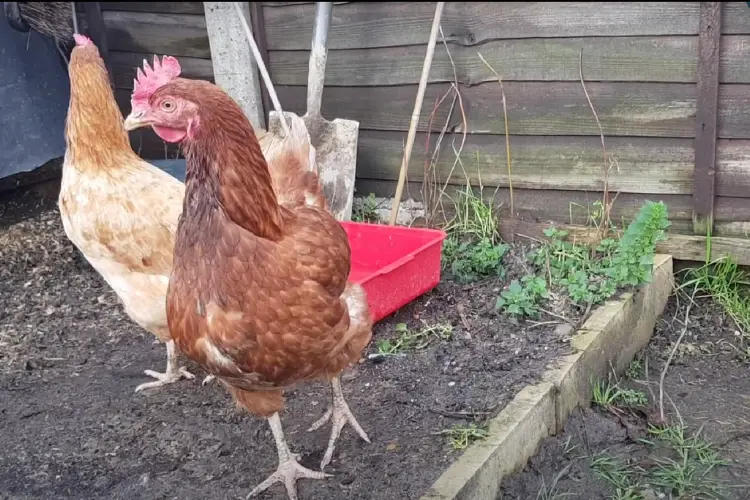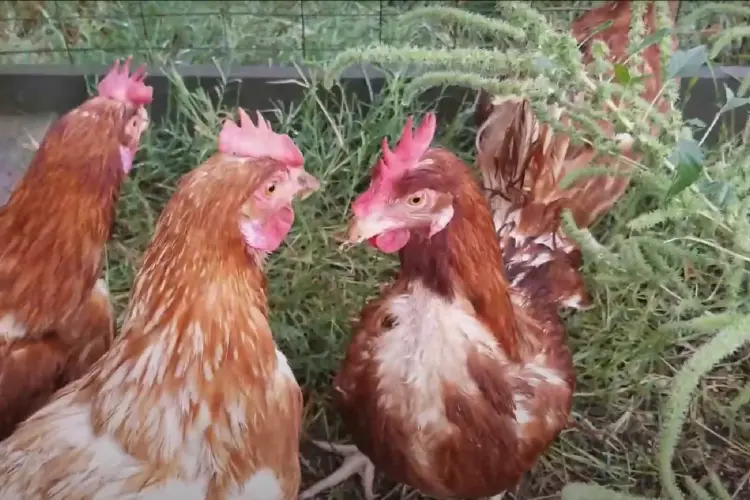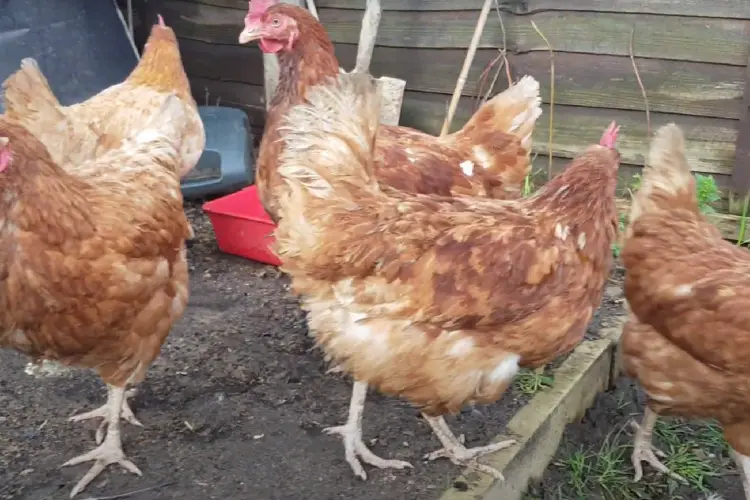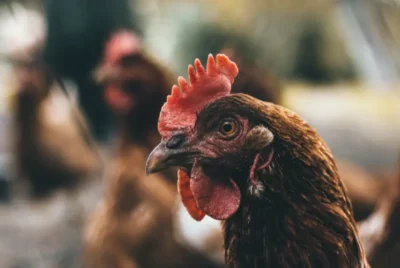Cinnamon Queen Chicken: A Comprehensive Breed Profile
Raising chickens is more than just a hobby for many people; it’s a way of life, an adventure, and sometimes, a source of income. But when it comes to understanding specific chicken breeds, like the Cinnamon Queen Chicken, there’s a troubling lack of clear, detailed, and reliable information. Novice poultry owners, and even experienced ones, grapple with inadequate breed profiles, which are often fragmented, confusing, or just insufficient.
In this article, we aim to comprehensively discuss the detailed profile of the Cinnamon Queen Chicken, helping you make informed decisions for a thriving coop.
Quick Overview of Cinnamon Queen Chicken
- Ideal for Beginners: Absolutely
- Expected Life Duration: Between 5 and 10 years
- Size: Hens weigh around 5.5lb, while Roosters at 7.5lb
- Feather Shade: Distinctive Cinnamon
- Weekly Egg Count: Produces between 5 to 6 eggs
- Egg Hue: Brown
- Broodiness: Not typically observed
- Child-Friendly: Definitely
- Price Range: A chick costs between $4.50 to $6.
Cinnamon Queen Chicken Breed History
The history of Cinnamon Queen Chickens dates back to the early 1990s, marking them as one of the newer entries in the poultry world. This breed is a hybrid, resulting from the crossbreeding of a Rhode Island Red male and a Rhode Island White female. The goal was to create an autosexing breed, one where the gender could be easily determined at hatch, with industry-quality egg-laying abilities.
Since their creation, Cinnamon Queen Chickens have rapidly gained popularity for their remarkable traits. These include rapid growth, high egg production, and hardiness – characteristics inherited from their parent breeds, making them an excellent choice, especially for poultry-raising beginners.
However, it’s worth noting that due to their relatively recent origin, there’s no established breed standard or heritage genes associated with them. Furthermore, they are not officially recognized by the American Poultry Association. This is an important consideration for those planning to breed Cinnamon Queen Chickens or when buying chicks from hatcheries.

How to Recognize a Cinnamon Queen Chicken?
Size
Cinnamon Queen Chickens are a medium to large breed. Typically, hens weigh approximately 5.5 lbs, and roosters are a bit heavier, weighing around 7.5 lbs. However, the exact weight can vary slightly based on factors such as diet and the specific lineage of the chicken. Despite this variation, Cinnamon Queens are known for their robust and hefty size, contributing to their hardiness and versatility in different environments.
Color
As their name suggests, the primary color of these chickens is a lovely shade of cinnamon. The hens typically have brown plumage interspersed with white tail feathers, providing a captivating contrast.
The roosters, on the other hand, are mainly white with cinnamon-colored saddle feathers. This difference in color is because Cinnamon Queen Chickens are autosexing; male chicks are white when they hatch, while female chicks hatch as a brownish cinnamon color.
Physical Appearance
Their distinctive appearance isn’t limited to their color. They also have other standout features such as red combs and golden legs. The mature hens and roosters have crimson wattles and transparent upper ears, enhancing their visual appeal.
In terms of body structure, Cinnamon Queens have a sturdy and compact build, which is a trait inherited from their Rhode Island Red rooster and White hen ancestors. Their body shape is generally broad-breasted and rounded, contributing to their large and robust appearance. The breed also features a yellow beak, adding to its striking appearance.

Cinnamon Queen Chicken Behavior
Temperament and Personality
Are Cinnamon Queen Chickens friendly? Yes, they are renowned for their pleasant and friendly personalities.
Generally, these chickens are quite docile and easygoing. They exhibit a friendly demeanor, which makes them an excellent choice for first-time chicken owners, as well as for families with children due to their gentle and non-aggressive nature.
These birds are sociable creatures who enjoy interacting with people and can even become somewhat attached to their owners. They love receiving attention and affection, and they may become a bit “clingy,” often seeking regular interaction and petting.
Cinnamon Queens also integrate well with other birds. They are known to coexist peacefully in a mixed flock, rarely causing any trouble or disruptions. They mind their own business, and while they establish their place within the flock hierarchy, they typically blend in harmoniously.
Noise
Cinnamon Queen Chickens, similar to their Rhode Island Red ancestors, are quite vocal. They are described as “talkative” and are not shy to express themselves through their rich and lively “egg song,” a vocalization that hens often make before or after laying an egg.
They tend to be chatty, frequently communicating with each other and their human caregivers. While many chicken owners find this characteristic endearing and a sign of the chickens’ sociability, it’s worth noting that the noise level might be a consideration for potential owners living in urban settings where noise could be a concern for neighbors.

Egg Color and Production
They are famous for their egg-laying prowess. Cinnamon Queen Chicken egg color is brown, and on average, a healthy hen can produce approximately 300 large eggs each year. This substantial egg production makes them an excellent choice for those who require a reliable and abundant source of fresh eggs.
Interestingly, Cinnamon Queens often start laying eggs earlier than many other chicken breeds, sometimes as early as their 16th week. This early onset of egg-laying contributes to their high annual productivity.
Another unique characteristic of the Cinnamon Queen is its capacity to lay eggs during the winter months. While many chicken breeds will cease egg production during colder weather, Cinnamon Queens typically continue to lay, albeit at a somewhat reduced rate. This trait makes them an attractive breed for those in cooler climates who still want a steady supply of jumbo-sized brown eggs year-round.
Can You Safely Eat Cinnamon Queen Chicken Eggs?
Absolutely, the eggs laid by Cinnamon Queen chickens are entirely safe to eat! Like eggs from any other healthy chicken breed, they provide a great source of protein, vitamins, and minerals.
Taking Care of Cinnamon Queen Chickens
Feeding and Nutritional Needs
Cinnamon Queen chickens are robust layers and require a nutritionally-rich diet to maintain their productivity. They should have continuous access to high-quality layer feed, ideally supplemented with protein-rich foods like mealworms, fishmeal, and sprouted lentils.
Since they frequently lay, additional calcium, sourced from oyster shells or crushed eggshells, is crucial for shell health. Don’t forget to include leafy greens for vitamins, and always provide fresh water to prevent dehydration.
Allowing them to forage freely will give them access to natural food sources and help keep their diet varied and balanced.
Chicken Coop Setup and Free Ranging
When setting up a coop for Cinnamon Queen chickens, it’s important to provide enough space for each bird to prevent overcrowding and subsequent issues such as bullying and disease spread. A minimum of 4 square feet per chicken in the coop is recommended.
To ensure comfort, provide a perching space of at least 8 inches for each bird. The nesting boxes should measure at least 12×12 inches, and it’s advisable to have one nesting box for every four hens.
Cinnamon Queen chickens also require outdoor space for exercise and foraging. They should each have about 15 square feet of space in the run. Given their fondness for free-ranging, it’s advisable to allow them to roam outside the coop if your circumstances allow. This not only aids in their overall well-being but also contributes to their natural behaviors and instincts.

Common Health Issues of Cinnamon Queen Chicken
Cinnamon Queen Chickens are generally hardy and healthy, but they are susceptible to specific health issues due to their high egg production. They can suffer from conditions like egg binding, egg yolk peritonitis, vent prolapse, or reproductive cancers, all linked to the stress their reproductive systems undergo because of their prolific laying. Calcium deficiencies may also occur, resulting in soft-shelled eggs.
Aside from these conditions, common chicken health problems like bumblefoot, lice, mites, and worms should be watched out for. Good hygiene practices, a balanced diet, and clean water are essential for preventing these issues and maintaining overall health.
Cinnamon Queen Chicken Chick Appearance
Cinnamon Queen chicks are usually a vibrant reddish-orange color or a combination of yellow and red tones, and their appearance may differ slightly based on their genetic background. As hybrids, there can be some variance.
The chicks are fluffy and quite adorable, like most chicken chicks. As they grow, they start developing their distinctive adult plumage, with males tending to be lighter in color than females. Remember, these are general observations and individual chicks may vary.
Are Cinnamon Queen Chickens Good for Meat Production?
Yes, Cinnamon Queen Chickens are also good for meat production. They are a dual-purpose breed, meaning they are valuable for both their egg-laying abilities and their meat. Cinnamon Queens mature quickly and have a good size, with hens typically reaching weights of 5-6 pounds and roosters reaching around 7-8 pounds.
Their meat is tender and flavorful. However, they are often more prized for their prolific egg-laying abilities, which often overshadow their use in meat production.
What is the Lifespan of Cinnamon Queen Chickens?
Cinnamon Queen chickens typically have a lifespan of three to seven years. However, with optimal care and living conditions, these chickens can live close to a decade. It’s important to note that predators and environmental factors can significantly impact their lifespan.
Therefore, providing a secure environment, routine health check-ups, and a balanced diet can potentially extend their lifespan. These chickens aren’t particularly known for long lives compared to other chicken breeds, but with good care, they can live healthily for a reasonable length of time.

Tips for Raising Cinnamon Queen Chicken
- Ensure that your Cinnamon Queens have enough space both in the coop and in the outdoor run. Each chicken should have at least 4 square feet of coop space and 15 square feet of outdoor run space to prevent overcrowding and maintain their well-being.
- Feed your Cinnamon Queens a balanced diet that includes high-quality layer feed or mixed flock feed. Supplement their diet with protein-rich foods like mealworms, fishmeal, and sprouted lentils. Ensure they can access clean water and consider offering calcium supplements like oyster shells.
- Regularly clean the coop, nesting boxes, and perches to prevent the buildup of waste and bacteria. Provide fresh bedding material for their comfort.
- When raising Cinnamon Queen chickens, always monitor for any signs of illness, parasites, or injuries. Conduct routine health checks to ensure their well-being. If you observe any irregularities or have any concerns, we recommend seeking guidance from a veterinarian.
- Secure the coop and run area to protect your Cinnamon Queens from potential predators. Regularly inspect fencing, doors, and windows to ensure they are predator-proof.
- Spend time with your Cinnamon Queens to socialize and observe their behavior. This will help you detect any changes or issues early on. Watch for signs of aggression, illness, or stress and take appropriate action if needed.
- Cinnamon Queens enjoy foraging and free-ranging. If possible, allow them access to a safe outdoor area to explore, scratch, and engage in natural behaviors. This can play a role in promoting their overall welfare and contentment.
- Offer environmental enrichment such as perches, dust-bathing areas, and toys to keep your Cinnamon Queens mentally and physically stimulated.
- Keep track of their egg production and address any irregularities or changes. If you notice a sudden drop in egg production or a Cinnamon Queen hen or abnormalities in the eggs, it may indicate underlying health issues that need attention.
- Stay informed about best practices in chicken care and seek advice from experienced poultry keepers or veterinarians when needed. Continually educating yourself will help ensure the well-being of your Cinnamon Queens.
Conclusion
The Cinnamon Queen chicken is a versatile and desirable breed that offers a winning combination of exceptional egg-laying abilities, a gentle temperament, and captivating aesthetics.
Whether you are a backyard chicken enthusiast or a commercial farmer, this breed’s productivity, adaptability, and striking appearance make it an excellent choice for those seeking a reliable and rewarding addition to their flock.




